
Water Treatment Plant manufacturers in india
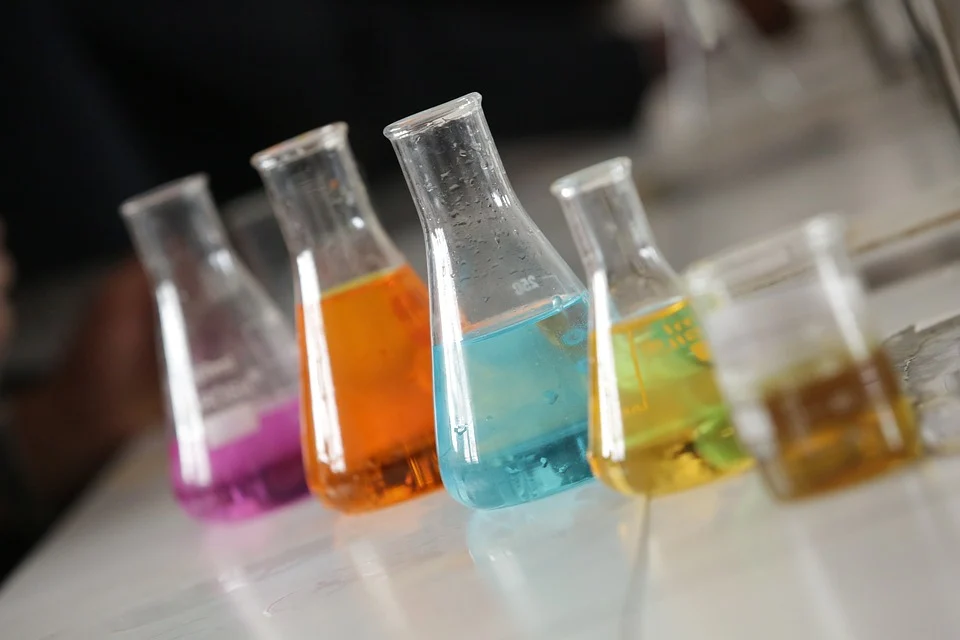
Water is a precious resource which we all need to survive. It is also one of the most important factors in determining the quality of life and health of a society.
There are many different methods used for treating water. Sometimes, methods like boiling or chlorination are used as a temporary solution until better technology becomes available for long-term use.
The water treatment industry is a sector that has been greatly transformed by the emergence of new technologies.
The treatment of water, in particular, has seen a lot of innovation in recent years.
Waste Water Treatment Plant Manufacturers in India
Unicare Technologies Pvt Ltd is a leading manufacturer of Water Treatment Plants in Mumbai, India. We offer different types of water treatments for commercial or residential use. Some of these treatments are as follows: – Sewage sludge treatment & Effluent treatment systems (EDS) – Septic tanks.
Our technologies are proven to filter contaminants, reduce the hardness of water, and remove chlorine and heavy metals. This makes your water safe to drink. We are passionate about providing affordable solutions that don’t compromise on quality. Be it water treatment or wastewater treatment systems – we have the best water treatment plant for you.
Water Treatment Plant Process
Water treatment plants are facilities that use a variety of techniques to purify water for human consumption. The process involves the removal of contaminants and other substances from water, such as bacteria, viruses, and certain chemicals.
The process of treating water at a water treatment plant includes steps such as, such as screening, coagulation, sedimentation, filtration, disinfection and chlorination.
1) Raw water is drawn from a source, such as a well or surface water, and enters the plant.
2) The raw water is filtered to remove particles, sediment, and other impurities.
3) The filtered water is disinfected with chlorine or ozone to kill harmful microorganisms.
4) The disinfected water is stored in tanks for further treatment.
5) The treated water is released into the environment (e.g., river)
Importance of Water Treatment Plant
Water treatment plants are the backbone of the water supply system. A large number of people have access to clean drinking water, but many others do not have this luxury and they must rely on other sources such as rivers, lakes and wells for their drinking water. The water treatment plant is an important part of the water supply system. It removes contaminants and other substances from the water to make it safe for human consumption.
Some of the Advantages of Water Treatment Plant
-It removes impurities and other contaminants from water.
-It protects the environment by not releasing harmful chemicals into the atmosphere.
-It produces clean water, which is safe to drink.
-It reduces the risk of waterborne diseases.
Water treatment plants are an essential part of our society. A clean and germ-free environment will boost your productivity and help you stay healthy!
Application:
- Residential & Commercial buildings
- Hospitals, Hotels & resorts, Shopping Malls
- Small and medium size industries
- Building temporary facilities
- Schools & Colleges
Why we are the best Water Treatment Plant Manufacturers and Suppliers in Mumbai, India?
We, at Unicare, make sure that you get the best water and wastewater treatment solutions that are innovative and eco-friendly. Our wastewater treatment solutions not only clean your water but also protect the environment with our state-of-the-art membrane technology that leaves no footprint behind.
We provide an extensive range of products and services including chemicals, membranes, filters, pumps, extended aeration systems, electroporation systems and more.
It is our constant endeavour to provide an environment-friendly solution for sewage management in India and other countries.
- We provide compact & robust design with long life
- Easy start-up & quick installation
- Design based on the specific application
- Modern control system with MCC or PLC-based operating system
- Low maintenance and low power usage
- Easy to operate no highly skilled labour required
- Easily transportable all over the world
Get in touch with us today to know more about our products and quote! Call Now at +91 982 300 9383 Or Email us at info@unicarewater.com
Product Features:

- High Quality Sequestrant & Crystal Modifiers
- Enviromental Friendly
- Blend Of Of Polymer & Phosphonate
- Lower Maintenance Cost
- Ease Of Use
- Lasting Effect
WATER TREATMENTS
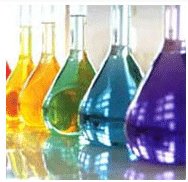
Industrial & Process Water Treatment
Scale
Corrosion
Biofouling
Suspended Solids
Boiler Water Treatment
Antifoams
Corrosion inhibitors
Multifunctional additives
Oxygen scavengers
pH adjusters
Scale inhibitors
Sludge conditioners
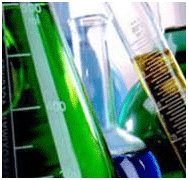
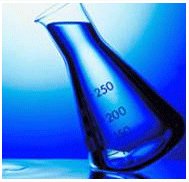
Cooling Water Treatment
Antifoams
Antiscalants
Biocides
Corrosion inhibitors
Multifunctional additives
Speciality Chemicals
Antifoams & defoamers
Chlorine dioxide
Janitorial & cleaning chemicals
Odour controllers
Reverse osmosis chemicals
Swimming pool chemicals
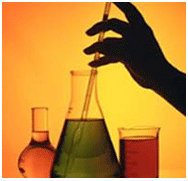
- E.A. (Extended Aeration)
- SAFF (Submerged Aeration Fixed Film)
- SBR (Sequential Batch Reactor)
- MBBR (Moving Bed Bio Reactor)
- MBR (Membrane Bio Reactor)
The three primary types of wastewater treatment are:
Physical Treatment: Physical treatment is the first stage of wastewater treatment and involves physical processes to remove large solid particles and debris from the wastewater. The physical treatment may include screening to remove large objects such as rocks, sticks, and plastics, followed by sedimentation to allow the heavy solids to settle to the bottom of the tank.
Biological Treatment: Biological treatment is the second stage of wastewater treatment and involves the use of microorganisms to break down organic matter in the wastewater. The biological treatment process may include activated sludge, trickling filters, or rotating biological contactors to provide a large surface area for microorganisms to grow and metabolize the organic matter in the wastewater.
Chemical Treatment: Chemical treatment is the final stage of wastewater treatment and involves the use of chemicals to remove remaining pollutants such as nutrients, heavy metals, and pathogens. The chemical treatment process may include processes such as coagulation, flocculation, sedimentation, and disinfection to remove remaining pollutants and produce treated water that is safe for discharge into the environment or reuse.
Overall, these three types of wastewater treatment processes work together to remove pollutants and pathogens from the wastewater and produce treated water that is safe for discharge into the environment or reuse for non-potable applications such as irrigation or industrial processes. The specific treatment processes used may vary depending on the characteristics of the wastewater and the regulatory requirements for discharge or reuse.
A wastewater treatment plant is a facility designed to treat wastewater and remove pollutants and pathogens before discharging the treated water into the environment or reusing it for non-potable applications. The components of a wastewater treatment plant may vary depending on the type and size of the plant, but some of the key components of a typical wastewater treatment plant include:
Inlet Works: The inlet works is the first stage of the treatment process and involves screens and grit chambers to remove large objects and grit from the wastewater.
Primary Treatment: The primary treatment stage involves sedimentation tanks to allow the heavier solids to settle to the bottom of the tank and be removed.
Secondary Treatment: The secondary treatment stage involves biological processes to remove organic matter and nutrients from the wastewater using microorganisms such as bacteria.
Tertiary Treatment: The tertiary treatment stage involves advanced processes such as sand filtration, disinfection, and activated carbon absorption to further improve the quality of the treated water.
Sludge Treatment: Sludge is the solid waste generated during the treatment process and is typically treated using processes such as anaerobic digestion or dewatering before disposal.
Effluent Discharge: The treated water is discharged into the environment or reused for non-potable applications such as irrigation or industrial processes.
Control Room: The control room is where the plant's operations are monitored and controlled using computer systems and sensors.
Overall, a wastewater treatment plant is a complex facility that involves a range of processes and components to treat wastewater and produce treated water that is safe for discharge into the environment or reuse.
The five primary steps of wastewater treatment are:
Preliminary Treatment: The first step of wastewater treatment is preliminary treatment, which involves screening to remove large objects and grit removal to remove heavy particles such as sand and rocks. This step is designed to protect downstream equipment and prevent damage to the treatment process.
Primary Treatment: Primary treatment involves physical processes to remove suspended solids and organic matter from the wastewater. This is typically achieved through sedimentation, where the wastewater is held in tanks to allow the heavier solids to settle to the bottom, and a scum layer to form at the surface. The solids are then removed using skimming equipment, and the remaining liquid is passed on to secondary treatment.
Secondary Treatment: Secondary treatment is a biological process that uses bacteria and other microorganisms to break down and remove organic matter, nutrients, and pathogens from the wastewater. This stage typically involves an aeration tank, where oxygen is supplied to promote the growth of microorganisms that consume organic matter. The wastewater then passes to a secondary sedimentation tank, where the microorganisms settle to the bottom and are removed as sludge.
Tertiary Treatment: Tertiary treatment is an additional stage of treatment that further improves the quality of the wastewater. This step can include a range of physical, chemical, and biological processes to remove remaining pollutants and pathogens. Examples of tertiary treatment processes include filtration, disinfection, and carbon adsorption.
Disinfection: The final step of wastewater treatment is disinfection, which involves the use of chemicals or physical processes such as ultraviolet light to kill any remaining pathogens and bacteria in the treated wastewater before it is discharged into the environment or reused.
Overall, the five steps of wastewater treatment work together to remove pollutants and pathogens from the wastewater and produce treated water that is safe for discharge into the environment or reuse for non-potable applications such as irrigation or industrial processes.
Wastewater treatment is a process that involves a series of steps designed to remove pollutants and pathogens from wastewater before it can be safely discharged into the environment or reused for non-potable applications. The wastewater treatment process typically includes the following stages:
Preliminary Treatment: This stage involves screening to remove large objects and grit removal to remove heavy particles such as sand and rocks.
Primary Treatment: This stage involves physical processes to remove suspended solids and organic matter from the wastewater using sedimentation tanks.
Secondary Treatment: This stage involves biological processes that use microorganisms to break down and remove organic matter, nutrients, and pathogens from the wastewater using an aeration tank and secondary sedimentation tank.
Tertiary Treatment: This stage involves advanced processes such as sand filtration, disinfection, and activated carbon adsorption to further improve the quality of the treated water.
Sludge Treatment: This stage involves treating the solid waste generated during the treatment process using processes such as anaerobic digestion or dewatering before disposal.
Effluent Discharge: The final stage of the wastewater treatment process involves discharging the treated water into the environment or reusing it for non-potable applications such as irrigation or industrial processes.
The specific wastewater treatment process used may vary depending on the characteristics of the wastewater and the regulatory requirements for discharge or reuse. Overall, the wastewater treatment process is essential for protecting public health and the environment by removing pollutants and pathogens from wastewater before it is released into the environment or reused for non-potable applications.
The four stages of water treatment are:
Coagulation/Flocculation: In this stage, chemicals such as aluminum sulfate (alum) or ferric chloride are added to the water to cause small particles to clump together into larger masses called floc. This process is called coagulation. Then, the floc is allowed to settle in a sedimentation basin through the process of flocculation.
Filtration: After the floc has settled, the water is passed through a filter to remove any remaining suspended particles, such as dirt, sand, and other debris. The filter typically consists of layers of sand, gravel, and anthracite coal that trap the remaining particles as the water passes through.
Disinfection: The third stage of water treatment involves adding disinfectants such as chlorine, ozone, or ultraviolet (UV) light to kill any remaining bacteria, viruses, and other harmful microorganisms that may be present in the water.
Distribution: The final stage of water treatment is distribution, where the treated water is pumped to homes, businesses, and other locations through a network of pipes and storage tanks.
It's important to note that the water treatment process may also include additional steps such as aeration, pH adjustment, and activated carbon adsorption, depending on the specific source of the water and the quality of the water being treated. The goal of the water treatment process is to produce clean, safe drinking water that meets or exceeds regulatory standards.
While the exact number of stages may vary depending on the specific water source and treatment facility, here are the 7 stages of water treatment that are commonly used:
Screening: The first stage involves the removal of large debris such as leaves, sticks, and other large objects from the water by passing it through screens.
Coagulation: Coagulation is the process of adding a coagulant such as alum to the water to destabilize and clump together small particles into larger ones.
Flocculation: The next stage involves stirring the water slowly to encourage the clumped particles to settle out of the water.
Sedimentation: After flocculation, the water is allowed to settle in a sedimentation tank, where the larger particles settle to the bottom.
Filtration: Once the sedimentation process is complete, the water is filtered through layers of sand, gravel, and other materials to remove any remaining particles.
Disinfection: In this stage, a disinfectant such as chlorine, ozone, or UV light is added to the water to kill any remaining bacteria, viruses, or other microorganisms.
pH Correction: Finally, the pH of the water is adjusted to a safe and stable level to prevent corrosion and ensure the water is safe to drink.
The treated water is then sent to storage tanks or directly distributed to consumers. Again, the number of stages and the specific processes involved may vary depending on the treatment facility, water source, and local regulations.
